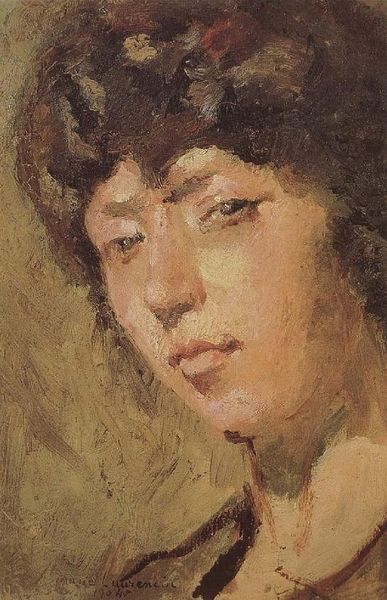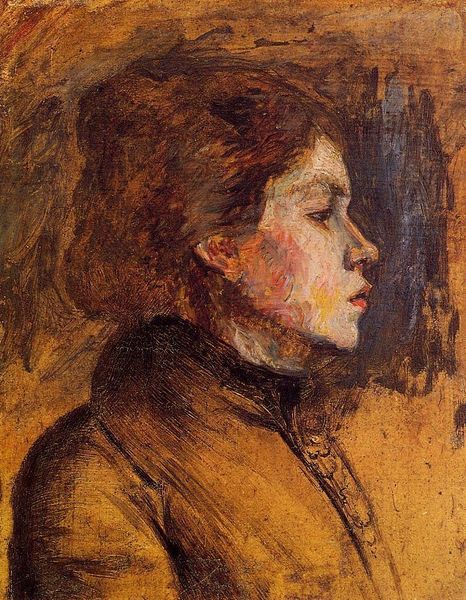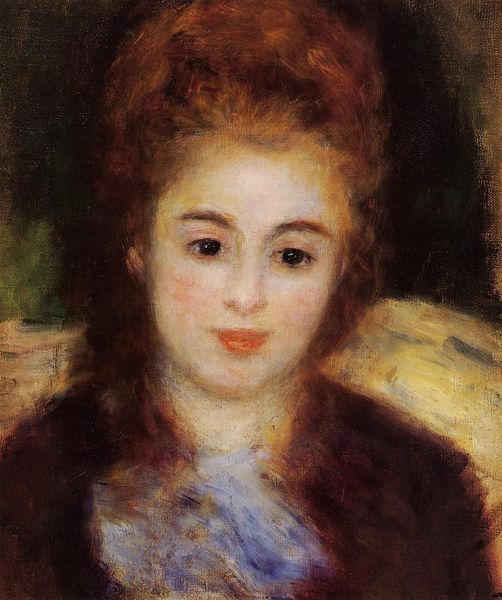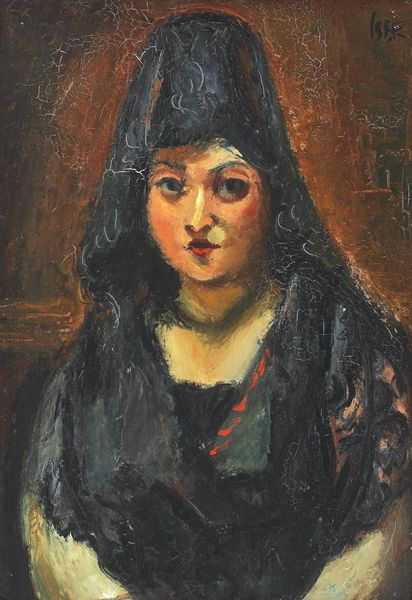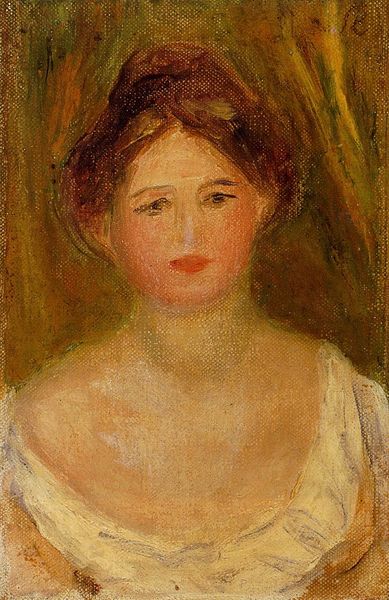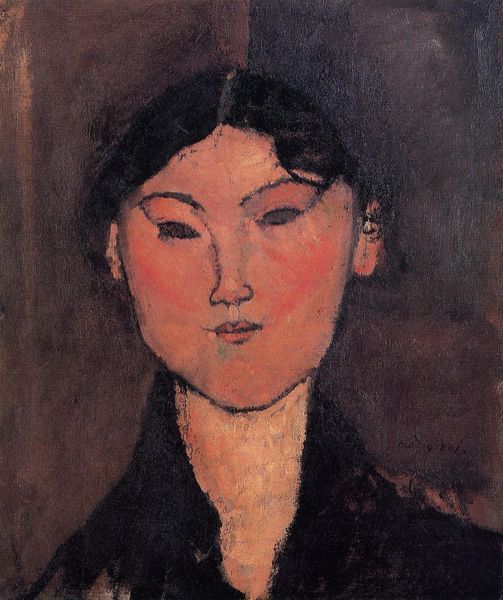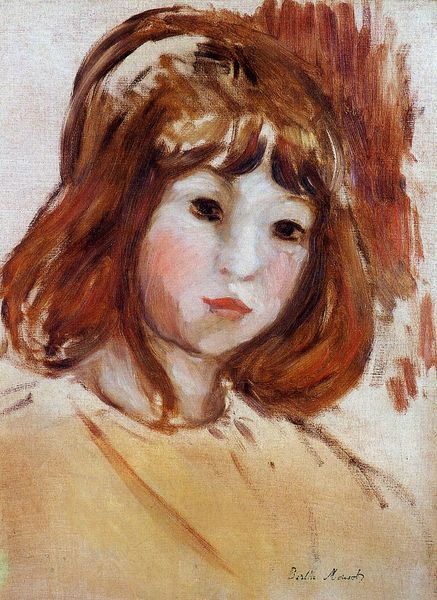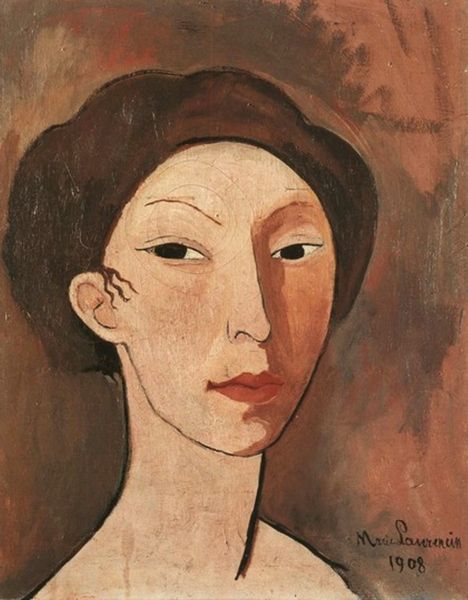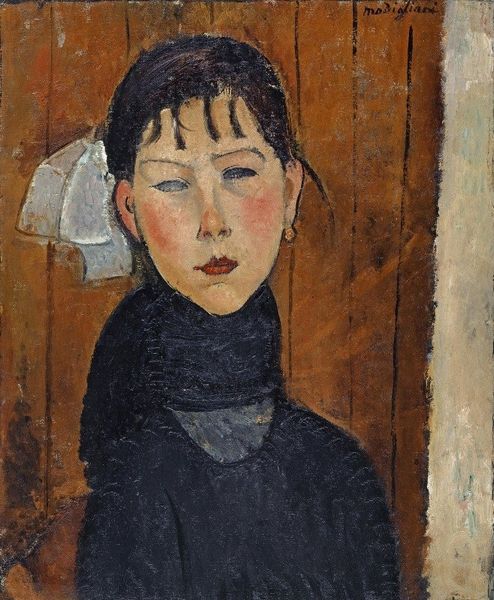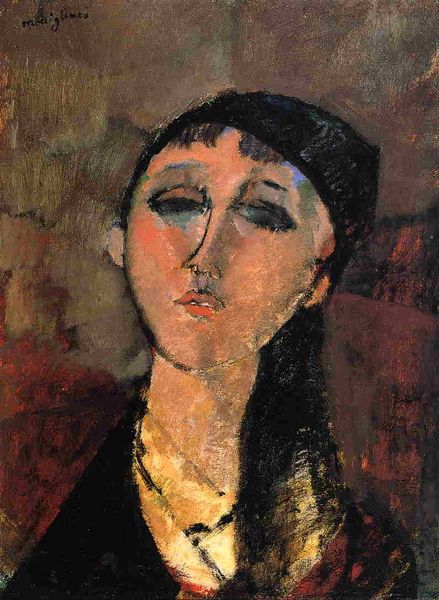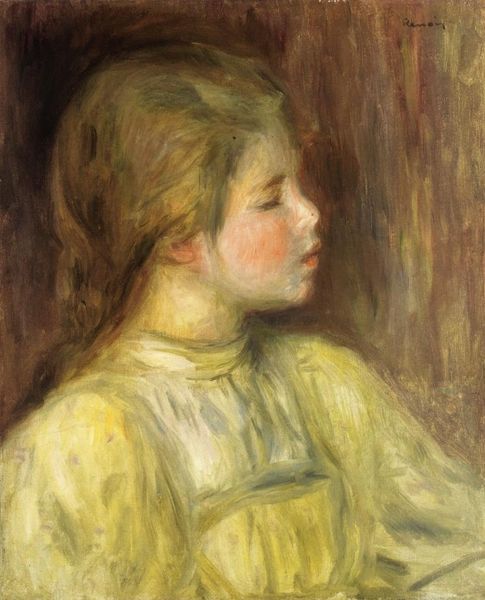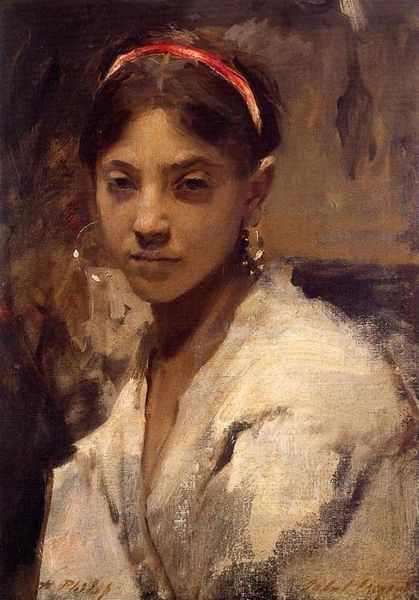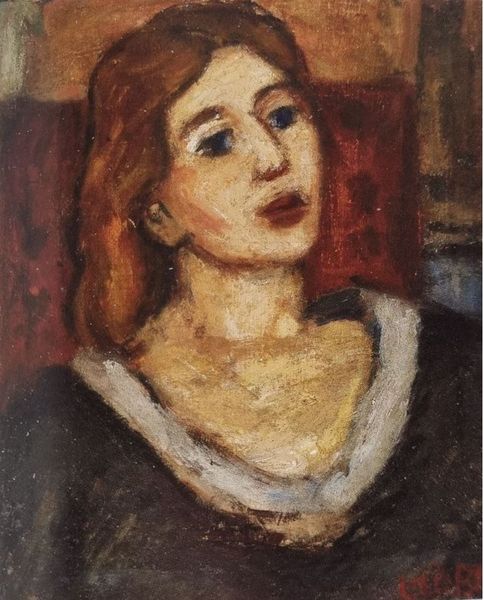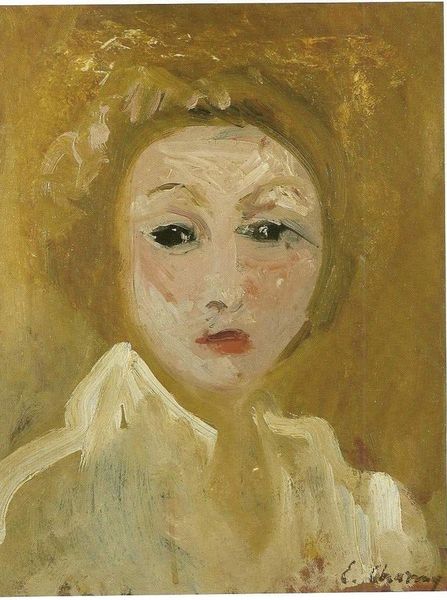
Copyright: Public domain US
Editor: This is Marie Laurencin’s “Self-Portrait” from 1905, rendered in oil paint. The muted palette and the almost hazy brushstrokes give it this introspective, almost melancholic feel. What do you see in this piece, especially given the time it was created? Curator: I see a young artist positioning herself within and against the artistic conventions of her time. It’s 1905, the height of Impressionism and the burgeoning avant-garde movements. While Laurencin's technique echoes Impressionistic brushwork, there's also a deliberate rejection of its overt celebration of light and bourgeois life. Notice how she presents herself with a direct, almost challenging gaze. How do you think this contrasts with the typical depictions of women at the time? Editor: Well, I guess many portraits of women from that period emphasized beauty or domesticity, a passive role, perhaps. Laurencin seems to be claiming agency here, but also maybe signaling her status as an artist? Curator: Exactly! Consider the cultural institutions shaping the art world then: the Salons, dominated by male figures and traditional tastes. Laurencin, a woman navigating this space, presents herself as serious, capable, an intellectual peer. The dark clothing, the lack of overt ornamentation, speaks to her alignment with the Bohemian artistic circles that challenged societal norms and these institutions. In many ways, a woman painting herself and declaring herself to be serious could be a political act. Editor: That's such an interesting point, it almost recontextualizes the painting itself. It’s more than just a personal image; it's a statement about her role in society. Curator: Precisely! It's about understanding how social forces influence artistic production and how artists negotiate their identity within that framework. I encourage you to think about that for the rest of the paintings you see today. Editor: Wow, I never considered it that way. It adds a whole new layer to appreciating this painting, looking at how she sought to represent herself amid those societal pressures. Thanks!
Comments
No comments
Be the first to comment and join the conversation on the ultimate creative platform.
